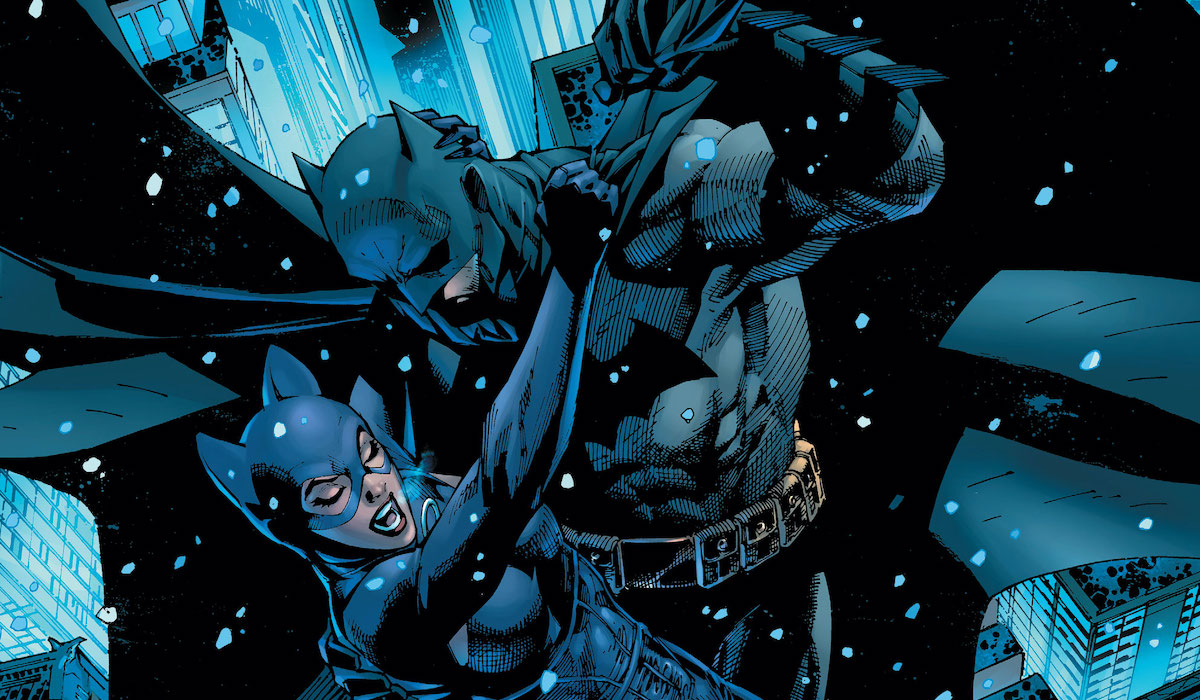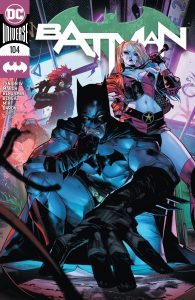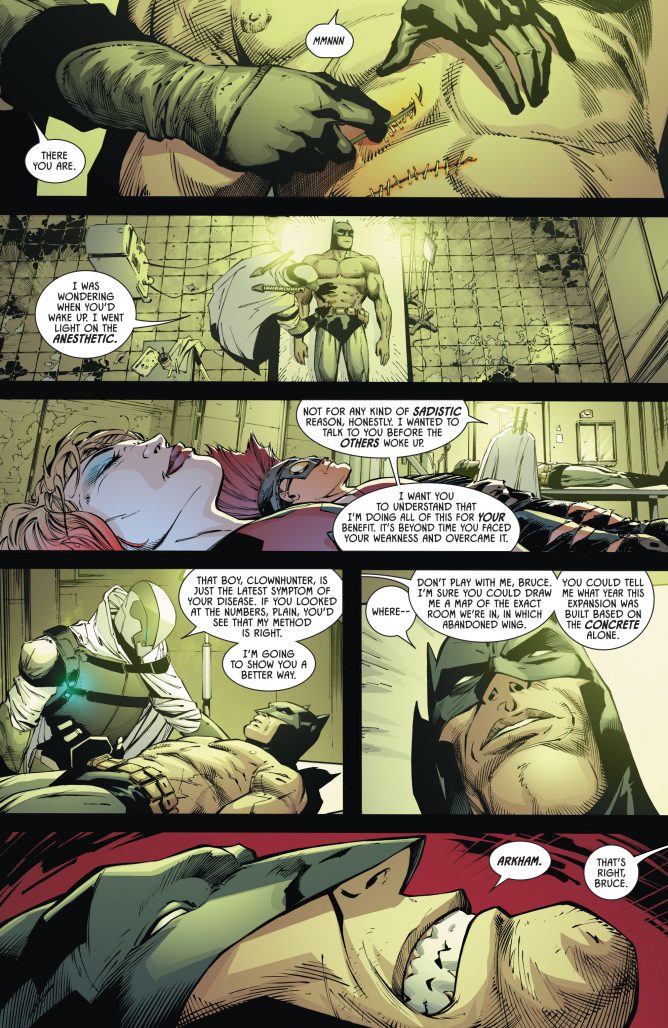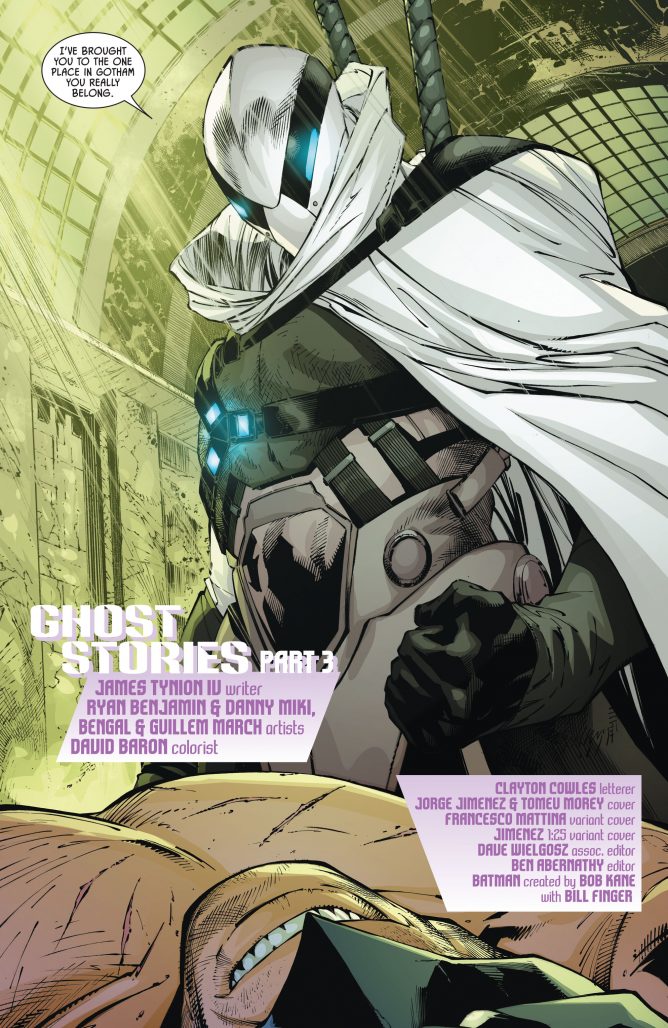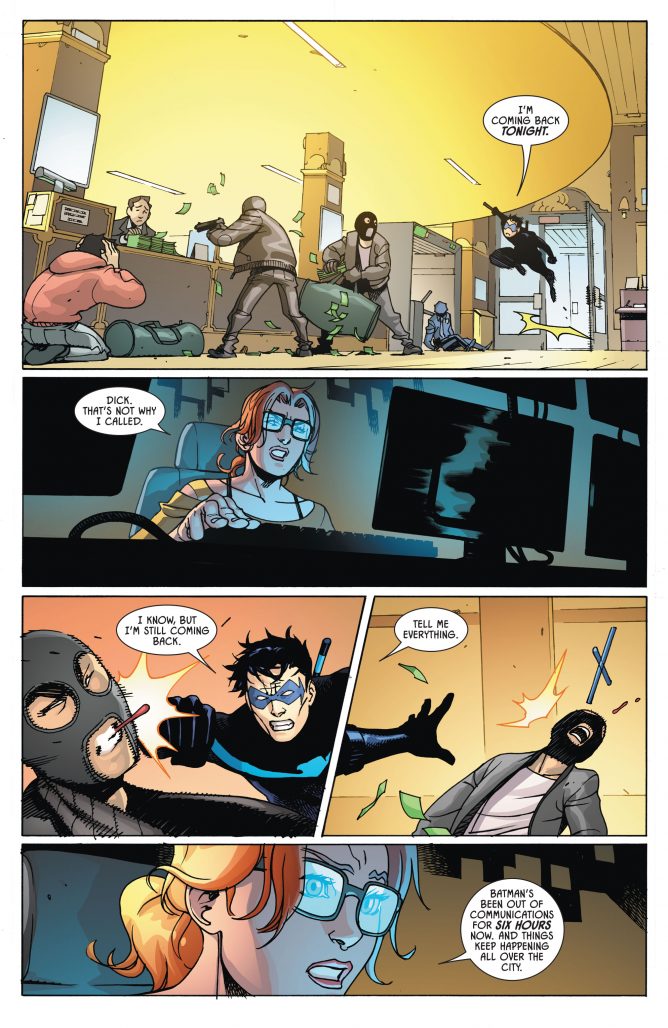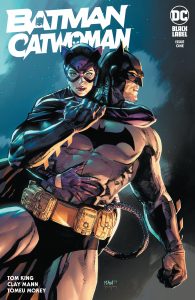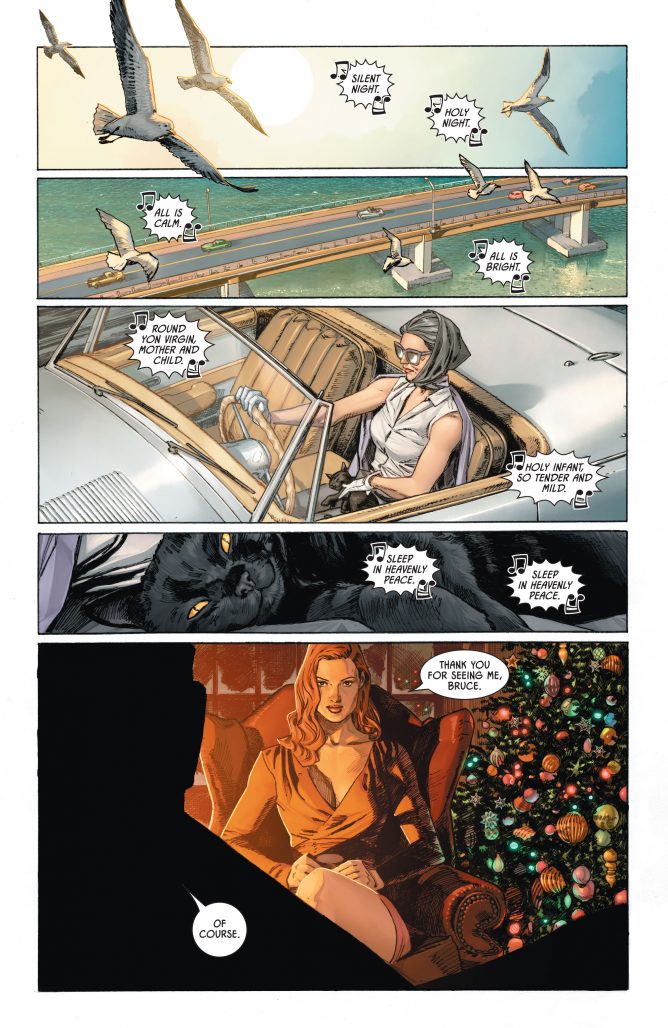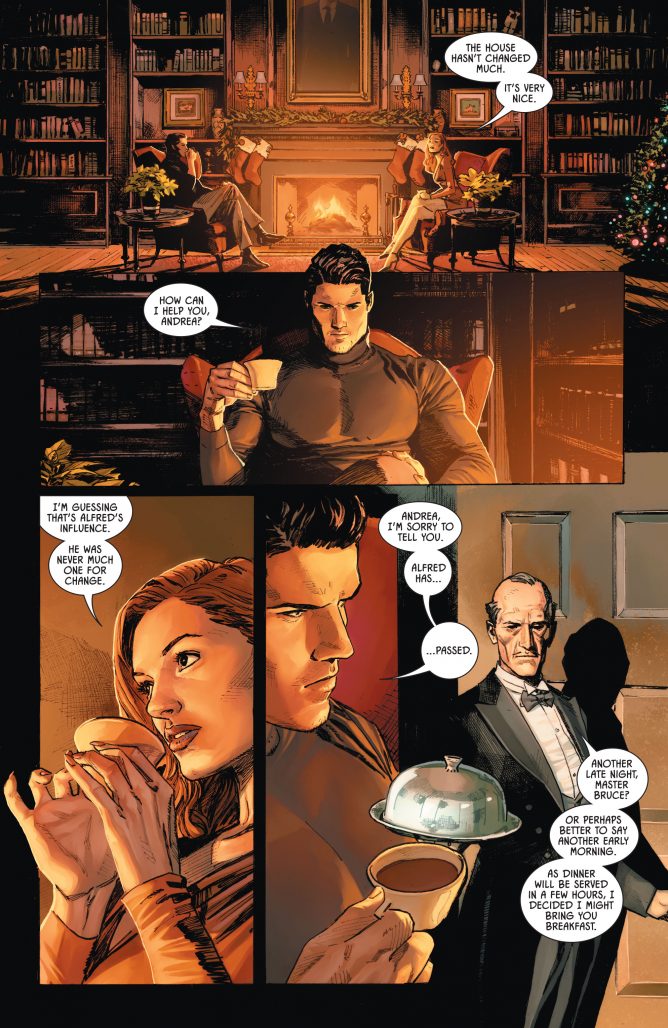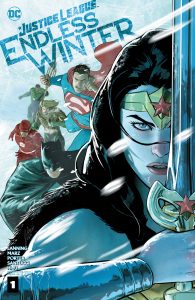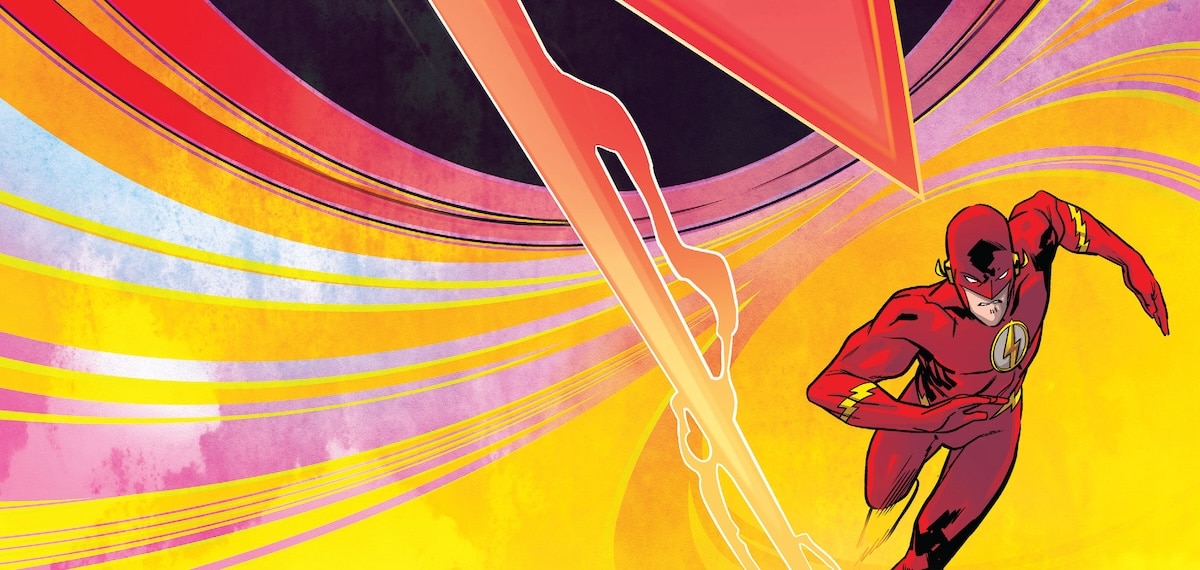THIS WEEK: We get two new Batman comics — Batman #104 is a strong issue that suggests the new status quo is a strong one, while Batman/Catwoman #1 is odd and jumbled.
 Batman #104
Batman #104
Writer: James Tynion IV
Artists:Ryan Benjamin, Danny Miki, Bengal, and Guillem March
Colorist: David Baron
Letterer: Clayton Cowles
I’m going to start this week’s round-up by eating a bit of crow. When writer James Tynion IV was tabbed to continue on with the main Batman title, I used this very feature to question whether that was a good choice. It’s not that I dislike Tynion’s work. No. I did, however, wonder if he hadn’t already peaked as a storyteller in Gotham City, following the excellent Bat-Family centric run on Detective Comics that he penned as part of DC’s Rebirth era. Basically, I didn’t think Tynion had much left to say about Batman and his periphery characters, certainly not enough to fill an entire new run of Batman comics.
And with his earliest issues of Batman, I started to suspect I was right. The Joker War story — which fanned out across the entirety of the Bat-line — felt a bit lazy, going back to the Joker well in a way that certainly didn’t seem novel or new. It felt like an easy arc to follow Tom King’s inward-looking 80-plus issues on the title, a way to cater to fans who maybe just wanted Batman to punch The Joker, and it also seemed to make a point of rapidly introducing new characters, a guaranteed way to hyper-charge sales among the speculators in the direct market.
Joker War is over though, and now we’re getting a clearer glimpse of the vision that Tynion and his collaborators have for the publisher’s flagship title. That vision is centered around a lo-fi Batman who has lost quite a bit of his material support system. This has had the effect of forcing him to rely on other characters in his orbit. It’s all a pretty far cry from the Bat-god version of the character that has dominated these books for a bit, supported only by Alfred, who seemed to be present more for occasional winking wise cracks than any kind of meaningful support.
This decision to move away from Batman as a master of his surroundings is nothing new for Batman comics. It’s done somewhat regularly, usually framed as part of a flashback to earlier times. What I think is making this new take work so well is the way it has actively doubled-down on an expanded support system, making everyone from Nightwing to Lucius Fox to Barbara Gordon (choosing to go back to Oracle of her own accord) absolutely vital, rather than some kind of looming vulnerability waiting to be attacked in a way that makes Batman sad.
The new character Ghost-Maker is key to this issue and, indeed, to this entire arc. Ghost-Maker is a figure from the past with whom Bruce Wayne had a particularly close friendship, portrayed here as passionately as any romance. He was a likeminded friend Bruce made when he was young, but small deviations in the duo’s shared visions for fighting evil drove them apart. Ghost-Maker is almost like Batman’s Magneto (but please don’t poke at that comparison too hard, because it probably won’t standup), and he’s adding layers of tension to Batman’s life that are making this new arc really interesting.
So yes, I’m enjoying these new Batman comics far more than I expected to, and the reason I think is that it feels newer than the book has in some time. It feels like an extension of the past played out in ways that make the main character more vulnerable and uncomfortable than he has been. Batman is culpable for his challenges, rather than simply being a powerful man laid low when villains attack those he cares about. I’m liking it quite a bit.
Verdict: Buy
 Batman/Catwoman #1
Batman/Catwoman #1
Writer: Tom King
Artist: Clay Mann
Colorist: Tomeu Morey
Letterer: Clayton Cowles
I did not, however, enjoy the other big Batman comic this week — Batman/Catwoman #1. My central complaint is a simple one: the book needlessly jumbles chronology, trading clarity for a pervasive air of disorientation that does not serve its plot, tone, or themes. There may very well be a good story in this issue as well as in the issues to come, but the way its being told is obscuring that. I firmly believe if a story is good, creators don’t need to jumble it up — it can stand on its own in a linear fashion.
And look, I know there are exceptions. In comics, of course, jumbled chronology has often been used (and used well) to emphasize connections between past and future in meaningful ways, but stories usually need two things to do this. First, time jumps need to earn their way in, especially when used as frequently as they are in Batman/Catwoman. Throwing events and timelines into a blender certainly didn’t serve the first issue well for me — I had to read the thing twice to understand it. Secondly, the art needs to do a very clear job of differentiating future from past with visual shifts.
I didn’t get that in Batman/Catwoman #1. There is, for example, a scene wherein Batman and Catwoman are flying through the air. We next cut to another time and place where they’re sharing a kiss. But their costumes are the same and there’s little aside from a very slight color change to let us know we’ve moved. It’s all on the same page, and the end result is a sense that Batman and Catwoman have paused for this moment somehow in mid-air. And that’s not an isolated incident. I found myself often wishing this story about Batman and Catwoman in love would just get out of its own way. Confusing is not inherently artsy, although in this book it seems to be confused as such.
In the end, I read the book twice to keep it all straight even a little bit. And I saw there are reasons behind the choices made, some of which might work really well for a certain number of readers. I just can’t shake a desire to know how this story would read if it was told in a clearer way from start to finish, one that let me get lost in characters and themes without having to expend so much of my mental energy figuring out what the heck was happening and when (as well as who is who, but that’s a different issue). As a result, I can’t in good faith recommend this comic, especially not when there are better Batman comics to be had.
Verdict: Skip
 Round-Up
Round-Up
- In non Batman comics, I really enjoyed Justice League: Endless Winter #1. This story is contained to December (and possibly the first week of January), and it’s pretty obviously a filler story, intended to give the publisher a linewide month of lead-time before going into Future State, but it also looks good and manages to feel classic without seeming cliched. No easy feat.
- The Dreaming: Waking Hours #5 delivers a wonderful conclusion for the first arc of a book that just may well end up being my favorite followup to Sandman. There’s just so much to love about this comic, from the literary interest to the absurdly-excellent artwork by Nick Robles and Mat Lopes, to the way it captures the tone of the original series better than any other spinoff. Glad to see this book continuing on with new issues solicited for the months to come.
- Far Sector #9 delivers another excellent issue of one of the most singular books in all of superhero comics. This book really is a different sort of idea-driven sci-fi, one that remains unconcerned with the usual big action beats of capes and tights comics. One thing that stood out about this particular issue was the incredible backgrounds and design work done by Jamal Campbell. Just stunning stuff.
- Finally, former DC Comics head honcho Dan DiDio writes himself an in-continuity sendoff, putting Dan the Barman as a guy who passes of the keys in Metal Men #12…I thought it was nice.
Miss any of our earlier reviews? Check out our full archive!


